By Robert Tate, Automotive Historian and Researcher
Images courtesy of the National Automotive History Collection
Posted: 11.21.2017
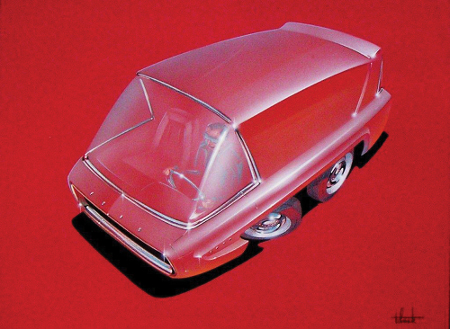 Early design by Jack Telnack: 1957 mini-vanJack Telnack, born and raised in Dearborn, Mich., grew up with automotive and especially Ford cars in his blood. Thus it was no surprise to family and friends when Telnack went on to become one Ford’s most talented designers.
Early design by Jack Telnack: 1957 mini-vanJack Telnack, born and raised in Dearborn, Mich., grew up with automotive and especially Ford cars in his blood. Thus it was no surprise to family and friends when Telnack went on to become one Ford’s most talented designers.
Telnack was born on April 1, 1937. Having grown up in Ford’s backyard, Telnack was a fan of most Ford automobiles but was especially enamored with the 1941 Lincoln Continental Cabriolet models along with the Model T. He was also inspired by other brands in his younger days such as the 1953 Studebaker and the Mercedes 300 SL, gullwing model designs.
Telnack had fond memories of visiting the Ford Rotunda and admiring the new Ford products and the great looking concept models on display. A graduate of Art Center School in Pasadena, Telnack’s lifelong dream was to someday become an automotive designer and to design cars for Ford.
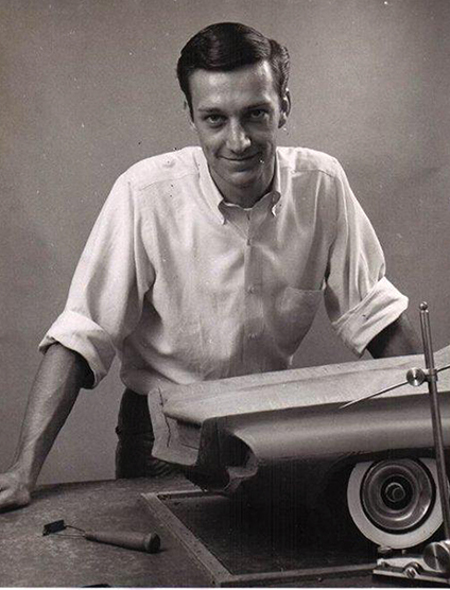 Jack Telnack, 1960, in the Ford Design Studio.Telnack got his wish in 1958 at just 21-years-old. Later, he would become the head stylist for Lincoln Mercury design studio in 1965. As his career would continue in 1966, he became the chief designer for Ford’s Australian design studio where he led the redesigning team for the popular Ford Falcon. The 1960s were a particularly creative and innovative for Telnack and for Ford. Not only did Telnack design cars for Ford Motor Company, he also did freelance work designing great looking boats for many other companies as well.
Jack Telnack, 1960, in the Ford Design Studio.Telnack got his wish in 1958 at just 21-years-old. Later, he would become the head stylist for Lincoln Mercury design studio in 1965. As his career would continue in 1966, he became the chief designer for Ford’s Australian design studio where he led the redesigning team for the popular Ford Falcon. The 1960s were a particularly creative and innovative for Telnack and for Ford. Not only did Telnack design cars for Ford Motor Company, he also did freelance work designing great looking boats for many other companies as well.
Telnack was responsible for the “Aero” look which first appeared on the European division’s 1972 Ford Fiesta. Telnack once said, “It was one of the most exciting programs I ever worked on while I was in Europe.” The aero look featured sweeping lines and fuselage-like curves.
In 1976, he was reassigned to Dearborn as Director of the International Special Vehicles and Advanced Concepts Design office. He was later appointed executive director of North American Light Car and Truck Design in August of that year and became executive director of North American Mid-Size Car and Interior Design in 1978.
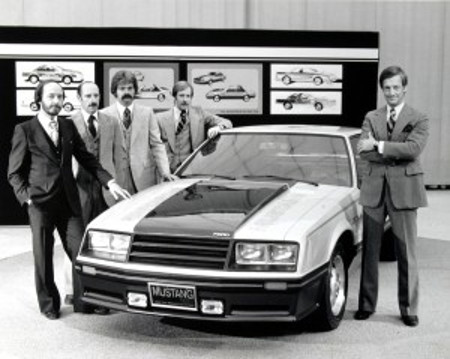 In the design studio for the 1979 Mustang.Ford introduced Telnack’s Aero design concept with the 1979 Mustang. That particular model, which had a tapered front end, did very well in the consumer market and was a popular design with auto enthusiasts.
In the design studio for the 1979 Mustang.Ford introduced Telnack’s Aero design concept with the 1979 Mustang. That particular model, which had a tapered front end, did very well in the consumer market and was a popular design with auto enthusiasts.
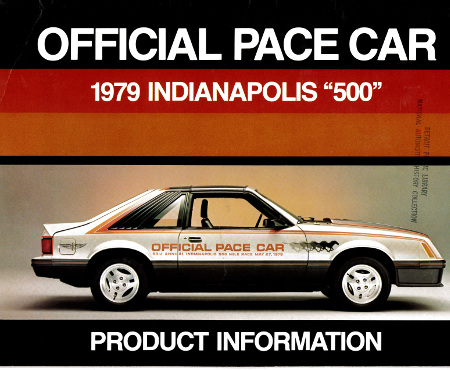
The 1979 Mustang was also tapped as the pace car for that year’s Indianapolis 500. The car was powered by a 5.0-liter (302-CID) V-8 engine with an automatic transmission. A unique feature for the 1979 Mustang pace car was the custom made T-roof, which many fans thoroughly enjoyed. The 1979 Mustang gave spectators an excellent view inside the car during the parade and pace laps. Telnack also is credited with the 1983 Ford Thunderbird.
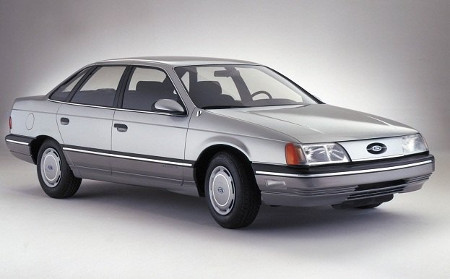 1986 Ford TaurusTelnack once said that the 1986 Ford Taurus was a breakthrough design. The Ford Taurus and Mercury Sable models, introduced in 1985, were both named the best-designed vehicles sold in America. It should be noted that the new Taurus models had become the best selling car in the country with over 368,000 models that were sold based on Telnack’s panache and ingenuity.
1986 Ford TaurusTelnack once said that the 1986 Ford Taurus was a breakthrough design. The Ford Taurus and Mercury Sable models, introduced in 1985, were both named the best-designed vehicles sold in America. It should be noted that the new Taurus models had become the best selling car in the country with over 368,000 models that were sold based on Telnack’s panache and ingenuity.
In conclusion, Telnack led Ford’s global design team with great enthusiasm and great leadership skills that changed the look of Ford products during the 1980s and 1990’s, his designs played a major role in the sales success of Ford and Lincoln-Mercury products that will always be a part of our automotive history.
 Jack Telnack
Jack Telnack



